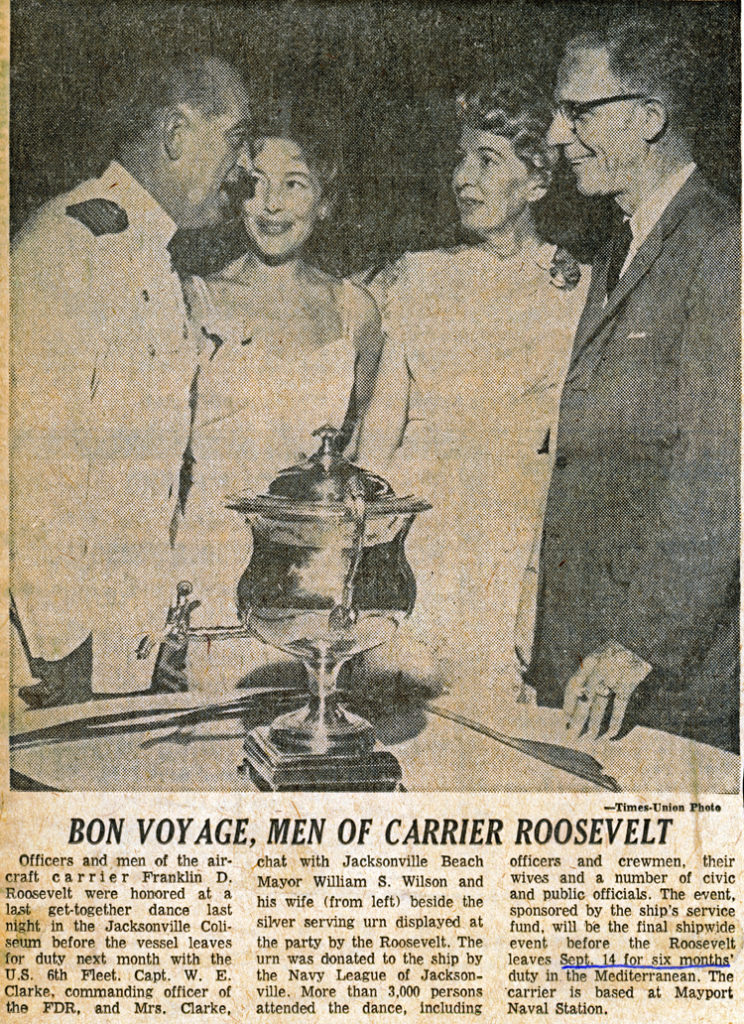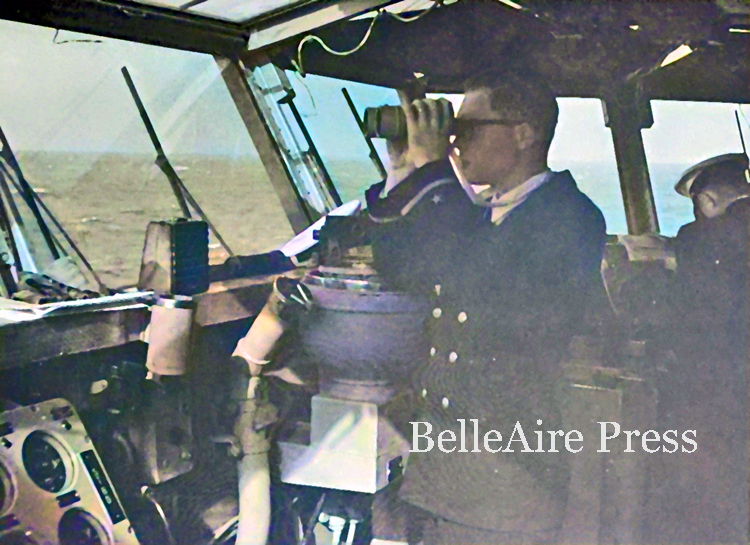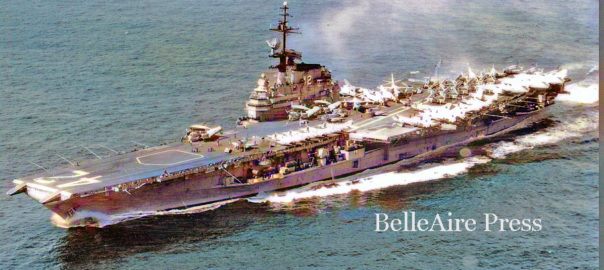After commissioning from OCS in Newport, followed by six months of Combat Information Center School at NAS Glynco (Brunswick, Ga), I reported to USS F.D. ROOSEVELT CVA 42, in Mayport, FL. After qualifying as a CIC Watch Officer in August, 1962, I volunteered to stand bridge watches to train for qualification as an Officer of the Deck underway.
These are among my most interesting…challenging…underway watches.


Midwatch Air Crew Feeding
On one occasion, during a mid watch (2400-0400), a COD (Carrier Onboard Delivery) crew had flown across the Med to bring us mail and urgently needed equipment/spares/replacements. I told the BoW (Boatswain’s Mate of the Watch) to sound Flight Quarters– in the middle of night–not a happy crew to be sure. I “softened” the news by having the Boatswain modify Flight Quarters to include the phrase, “to recover COD with mail.” Much less grumbling.
The only time I was ever the OOD for flight quarters with the Captain in his Sea Cabin.
After we got the COD aboard, the word came up that the crew was hungry and had been refused even a sandwich by the the galley folks.
I ordered them to prepare something, sandwiches, coffee, bug juice, whatever it took.
Then, the Supply Officer, an O5 called me up and tried to pull rank, saying his folks were tired, and needed their sleep. I understood and said so, but this crew had flown a long, long way to make a night landing with MAIL.
“Thank you, Sir, but the COD crew is tired and hungry, they WILL be fed.” Although I was an Ensign (as he reminded me), I was the OOD and only the Captain and XO could countermand my orders.
The crew was fed!!!
[I avoided the Supply Officer for a long time after that…eventually, he forgot who I was ;)) ]
A Screw Loose? No, Much Worse
It was in September 1964, and I was the officer of the deck. In fact, it was the last Officer of the Deck watch I was to stand on ROOSEVELT. Captain Malcolm Cagle was the CO.
We were conducting flight ops early in the afternoon with not much wind down the deck. That meant we had to use all eight boilers on the line and working hard to reach speeds of up to 25 knots to have enough wind down the deck for safe launches and recoveries.
We were well into the launch, when I felt something, as did everyone else on the bridge, that none of us had ever felt before. It was a very pronounced shimming that was coming from we could not figure out where. First we thought it might be some vibration caused by the SPN–47 Long Range air-search radar. No, that turned out not to be it.
Over to the 21 MC… Main Control? Bridge! then I described the strange vibration and asked the watch officer if they were feeling anything down there? No, everything seemed normal to them. Now, that was strange.
Then I used the various sound powered phone circuits to check with the many stations that were interconnected. Yes, other stations were feeling the vibration, too.
Then we got a report from after steering that they were experiencing extreme vibrations that seemed to be coming from below them in the vicinity of one of the screws. Now that was bad news indeed.
We finally got the rest of the launch in the air, and set about determining what the hell had happened and hopefully, how to fix it.
Finally, we stopped the ship, and sent divers over the side to assess the damage.
Really bad news – one of the blades on the starboard outboard screw had broken off. The divers noted that the break area showed corrosion indicating the crack had been there for quite some time.
What to do now? More consultations with main control. What about locking the shaft so that it did not turn and thus whip around causing the vibration and putting extreme stress on that shaft?
Yes, that would work, but this meant the ship could not do more than 19 kn since to do so would break the jacking gear that locked the shaft, and allow the off-balance screw to freewheel, possibly breaking off entirely and throwing the remnant of the screw into the ship causing massive damage.
Moreover, we had at least a dozen planes in the air right now and they were running out of fuel.
Further, they were too far from a bingo field to divert. We had to get them back aboard somehow.
The wind was not cooperating.
More anxious consultations with the air boss regarding how to adjust the ships speed below 19 knots without jeopardizing the safety of the recovery aircraft.
Finally, we got back underway to reach 19 knots with me using all the information from the anemometer to chase every wisp of breeze possible and get it down the deck at 5° to port.
Every trap was a nailbiter. But, with PriFly coaching the planes down, we finally got them all aboard safely.
As we were taking deep breaths and wiping our brows, I dropped the ships speed to 15 kn as consultations and message traffic began to fly describing our emergency situation.
It took me a long time to write the deck log after that watch
“… steaming as before, launching aircraft, when a blade on the starboard outboard shaft broke off… And then all hell broke loose…”
Well, maybe not…
The next day I was COD-ed off to begin a PCS that would take me to OCS in Newport as an instructor.
What a sendoff watch 🙂
Once I was an instructor it made a terrific sea story for my audience of rapt OCs, many of them headed out to sea to start their own shipboard tours.
Not only was this the last OOD u/w watch I was to stand on Rosy, but to this day, it remains the hairiest watch I ever stood as an officer of the deck.
